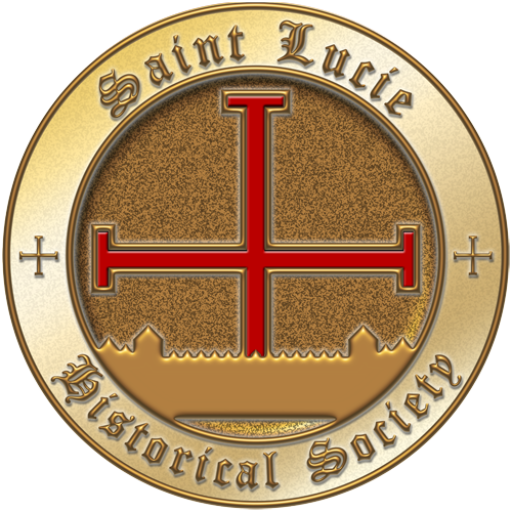Major William F. Russell
During the Seminole Indian uprising in July of 1849, William was shot, the ball broke the small bone in his left arm. This attack resulted in the death of his brother-in-law John Barker. His home was ransacked, many items taken and the furniture broken. His and Barkers’ cattle were found dead, floating in the river. Mrs. Russell, Mrs. Barker, Miss Bullock, five white children, two negro girls, a negro infant and Mrs. Russell’s infant were found two days later in a boat, having had nothing to eat for that time except oysters opened by a pair of scissors one of the women had taken. One of his daughters, along with eight negros, who had been in a second boat, was missing for a time following the outbreak, but was found in New Smyrna having walked up the coast for four days, surviving on berries and turtle eggs. Major Russell and his family returned to their homestead by January 1850. Fort Capron (March 1850-June 1859) was built near his land. He then served as Inspector of Customs, ran a store and trading post.
Russell was holding 14 slaves, in the 1850 St. Lucie, Florida Slave Schedule, seven females ages 50, 37, 22, 18, 10, 5, and 2; also seven males ages 44, 13, 10, 14, 9, 8 and 5 months. (There were 27 slaves in the county at this time.)
William built a new house about 1875. It floated off its piling in the 1928 hurricane and now rests on an Ais Indian midden. This is the oldest standing house in St. Lucie County and is owned by the Padrick family.
Born in North Carolina in 1805, William is said to have died in Orlando. Russell family members are believed to be buried at Paine Cemetery (aka St. Lucie Cemetery), located on the Old Dixie Highway, south of what is now the Village of St. Lucie.
References:
- Pictorial History of Saint Lucie County 1565-1910, by Kyle S. Van Landingham 1988
- A Portrait of St. Lucie County, Florida, by Lucille Rieley Rights 1994
- East Coast Florida Memoirs, 1837-1886, by Robert Ranson 1926.
